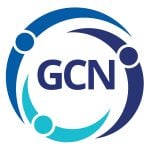Are you a W-2 employee working on a start-up or have an ongoing side hustle, side gig, or freelance work that you want to keep secret and wonder how?
Running a business in stealth mode on LinkedIn as an employee can be a delicate balance between pursuing your entrepreneurial ambitions and fulfilling your responsibilities as an employee. Here are some tips to help you navigate this situation:
Maintain Confidentiality: Ensure that you maintain the confidentiality of your business plans and ideas. Avoid discussing sensitive information about your business on LinkedIn or any other public platform.
Separate Personal and Professional Profiles: If you have a personal LinkedIn profile, you can build a company page for free, but don’t connect it to your experience section, and do not use your personal name as part of the company name.
If Applicable, Be Vague About Your Job Title: If you’re working on your business in stealth mode while holding a full-time job, consider using a more generic job title on your LinkedIn profile that does not give away your specific responsibilities. In contrast, if you are a 1099 independent contractor looking for a W-2 job, change your title from Founder/Owner to Managing Director.
Focus on Thought Leadership: Use your LinkedIn profile to establish yourself as a thought leader in your industry or side gig. Share valuable insights, industry trends, and helpful content without directly promoting your startup. Use hashtags instead of tagging your company page unless a family member or partner can hold the reigns as the one “in charge” of the business. Actively and consistently engage on LinkedIn by posting and commenting.
Connect with Relevant Professionals: Connect with individuals who may be interested in what your startup does. To start, you can invite 100 people to follow your company page. After that, you can invite 250 people monthly to like your company page.
Participate in Groups and Discussions: Engage in industry-related LinkedIn groups and discussions, showcasing your expertise and indirectly promoting your business by sharing relevant insights.
Request Non-Disclosure Agreements (NDAs): If you need to discuss your business with potential partners or investors, consider having them sign an NDA before sharing sensitive information.
Consider an Anonymous Job Posting: If your startup requires hiring employees, you can anonymously post job openings on LinkedIn, referring to the company as “a stealth-mode startup” or similar.
Utilize Private Messaging: If you need to discuss your business with specific individuals, use private messaging instead of public posts to maintain confidentiality.
Stay Compliant with Company Policies: Ensure that your activities on LinkedIn and your entrepreneurial pursuits do not violate any company policies or employment contracts and don’t violate LinkedIn’s User Agreement.
Remember, while being discreet about your entrepreneurial endeavors is essential, honesty and integrity should be maintained throughout the process.
Balancing your job responsibilities and startup ambitions can be challenging, so proceed cautiously and ensure you are not compromising your employment or breaching any agreements.
When in doubt, seek legal advice or consult your company’s HR department.
I have had my side gig since doing the fictitious name filing in California in 1993 and Pennsylvania in 1994, and I often worked various full-time W-2 jobs. It IS doable.
If you want to build a company page but don’t know how to set it up, read the article Establish and Leverage Your LinkedIn Company Page Self-Employment.
Have you read last week’s article How to Minimize Age Discrimination on LinkedIn?
NEXT STEPS
- Subscribe to my newsletter on LinkedIn for bright ideas to manage your career.
- Join as a member at https://greatcareers.org/membership of the #1 business networking association on the Philadelphia Business Journal’s Book of Lists three years in a row!
- If you need a resume or LinkedIn profile to get you to your next step, book a call to chat!
- Follow #GreatCareersPHL
AUTHOR BIO
Lynne M. Williams is the Executive Director of the Great Careers Network, a volunteer-run 501(c)3 nonprofit organization that provides career development and networking connections for 1) job seekers in career transition, including veterans, and 2) employed and self-employed for career management.
Aside from writing keyword-focused content for ATS resumes and LinkedIn profiles, Lynne is currently writing her doctoral dissertation on LinkedIn for Job Seekers. She is a contributing author on “Applying to Positions” in Find Your Fit: A Practical Guide to Landing the Job You Love, along with the late Dick Bolles, the author of What Color is Your Parachute?, and is also a speaker on career topics.
This article is also published on: vista.today, montco.today, delco.today, bucksco.today, and in the author’s LinkedIn newsletter. A list of articles can also be found in a Google doc.




